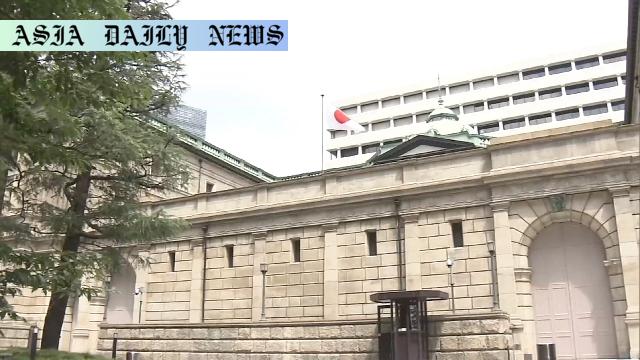Interest Rates: Bank of Japan maintains cautious approach as it gauges trade agreement impact and economic indicators.
BOJ likely to maintain its current short-term interest rates.
Focus remains on evaluating the Japan-US tariff agreement impact.
BOJ to present its fiscal outlook through 2027 during this meeting.
Possible rate hike discussed if economy meets inflation expectations.

The Bank of Japan Maintains Its Cautious Outlook
The Bank of Japan (BOJ) is once again demonstrating its restraint by choosing to leave short-term interest rates untouched. This decision comes as the central bank’s two-day policy meeting reaches its conclusion this Thursday. With this move, the BOJ underscores its commitment to closely monitoring the effects of recent economic developments, particularly the anticipated outcomes of the Japan-US trade deal. This careful approach highlights the central bank’s priority of not just overseeing monetary policies but ensuring the well-being of both corporates and consumers in a dynamic economic environment.
Deputy Governor Uchida Shinichi recently hinted at an optimistic but measured stance regarding the trade agreement’s potential to boost financial stability. However, as of now, the tangible indicators regarding its impact remain unavailable, leaving room for speculation. Analysts believe that the BOJ, focusing on stabilizing inflation and prices, has good reason to wait until more robust data emerges to predict a comprehensive outcome. Prices in Japan have remained stubbornly high despite various measures, which continues to add pressure on consumption trends and corporate confidence.
Uncertainties Persist Amid Trade and Economic Conditions
The BOJ has now held its rates steady over three consecutive policy meetings since March. The decision reflects lingering uncertainties associated with global trade discussions, including the tariff negotiations with the United States that concluded last week. While the conclusion of this deal is seen as a stabilizing factor, the central bank is mindful that these resolutions take time to manifest substantial economic benefits. BOJ officials collectively agree that allowing the economy more time to reflect these changes will create an accurate roadmap for future monetary policies.
During this session, the BOJ will also release its projection for Japan’s economic future through fiscal 2027. This includes goals for stabilizing inflation, fostering corporate profits, and addressing personal consumption trends. The institution has reiterated that any decision to increase the rates will be tied to the economy’s ability to meet its inflation and growth targets sustainably. Analyzing the trajectory of corporate profits and public purchasing power could therefore define how these metrics shape rate adjustments going forward.
Assessing the Larger Picture: A Wait-And-See Approach
The Bank of Japan’s reluctance to shift its policies prematurely shows a responsibility toward fostering economic resilience amidst external influences. By carefully observing influential economic variables such as consumer price trends, corporate growth rates, and global trade dynamics, the bank aims to maintain confidence in Japan’s financial ecosystem. Although Japan has experienced slow inflation recovery, the BOJ’s approach appears to emphasize long-term stability over short-term adjustment risks.
As they analyze the comprehensive economic blueprint through 2027, BOJ officials are signaling their openness to accommodating transformative reforms, should they align with economic goals. This fiscal strategy could serve as both a precautionary tale and a proactive method of reinforcing trust in Japan’s evolving economic strength.



Commentary
The BOJ’s Steady Approach: Balancing Risks with Growth Opportunities
The Bank of Japan’s decision to keep interest rates unchanged demonstrates an increasingly deliberate stance amidst evolving economic conditions. While this may seem overly cautious to some, maintaining stability during times of uncertainty reflects a prudent acknowledgment of long-term complexities. The Japan-US tariff agreement certainly adds an interesting dimension to this narrative, suggesting that trade relations and external partnerships are integral to Japan’s financial landscape. However, this also underscores the need to evaluate whether the expected benefits materialize as intended in the short term.
Economic Growth and Inflation: Essential Yet Challenging
The interplay between global economic shifts and Japan’s domestic policies creates an area of significant complexity. The BOJ’s careful acknowledgment of inflationary concerns mirrored by steady prices indicates an underlying challenge the economy faces. The notion that it’s better to wait for the fiscal environment to stabilize before implementing abrupt monetary changes places the BOJ in a strategic yet reactive decision-making role. Therein lies the core debate for policymakers: to act proactively or hold back conservatively. With a nuanced set of conditions surrounding fiscal 2027, BOJ seems committed to ensuring Japanese individuals and businesses alike find stability.
A Forward-Looking Perspective
As inflation and the global economy continue to impact Japan’s domestic financial framework, it will be critical for the BOJ to establish itself as both a stabilizer and an innovator. Transparency in communication and tangible results will undoubtedly shape the public’s perception of their policies. By actively pursuing these goals while remaining open to opportunities in structural reforms, BOJ has the potential to initiate widespread confidence in its decision-making processes. At this juncture, such a proactive and calculated approach represents the kind of resilience necessary to navigating economic systems in flux.